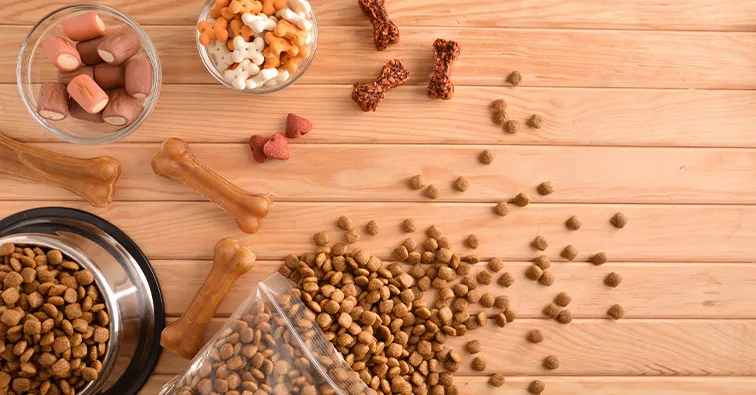
Despite inflationary pressure, the pet food industry remains strong in the US and globally. While resilient, pet food manufacturers and suppliers aren’t immune to broader economic headwinds. From formulating pet foods with different ingredients to meeting changing consumer demands, these are dynamic times for a well-established market.
Pet Food Industry Trends and Statistics
Consumers battled historic inflation throughout 2022. Even as the Consumer Price Index declined throughout the year’s second half, rising prices impacted retail sales in most verticals. Pet owners place the same importance on their pet’s health as their own, which provides substantial insulation from cost-cutting measures among the 68% of American households that own a pet.
Pet food prices increased more than 24% as of Q4 2022, which has changed how consumers purchase pet food products. One survey found that 4 in 10 pet owners plan to buy more food and pet care items online in 2023, which could force some brands to invest heavily in direct-to-consumer and other new sales channels.
Pet Food Goes Private Label
Rising prices could change consumer habits for the long term, increasing sales of private label pet foods. Often more economically priced, private label brands provide retailers with increased pet food margins and reduce reliance on suppliers.
In Q2 2022, 24% of all pet owners surveyed reported purchasing at least one private-label product in the previous six months. Seventeen percent claimed to have used private-label exclusively for pet food, treat or supplement purchases.
Another Year of Supply Chain Kinks
From sourcing raw materials to filling retail shelves, the pet food industry has weathered the same supply chain storm as the rest of the world. That has accelerated plans to diversify ingredient sources. It’s also pushed manufacturers to expand or outsource pet food formulation and engineering, and resource distribution capabilities the reduce reliance on overseas partners.
Manufacturers are working with more suppliers than ever to mobilize a “plus-one” strategy; for every ingredient, packaging material or distribution route, have a second ready to deploy. That’s also led more manufacturers to seek specialized supply chain services that provide an holistic approach and expansive resources to put products on store shelves.
Third-party Pet Food Nutritional Analysis
One of the key differentiators for retailers is the ability to deliver premium nutrition that justifies any incremental price adjustments. On-package marketing that informs consumers of product origin, processing practices or sustainability commitments builds brand authority and trust.
Third-party nutritional analysis adds weight to these claims by outsourcing quality assurance and lending credibility to a brand’s commitment to quality.
Quality Always Counts
Pet food manufacturers also rely on a commitment to quality at every step in the supply chain. That’s why distributors like Tilley Distribution provide quality assurance measures from source to facility, including:
- GFSI-certified storage facilities
- Food-safe transportation vehicles
- Lot traceability
- Quality control testing and full-service labs
- Technical ingredient experts to assist with formulation and production
Engineering pet food to meet nutritional needs depends on ingredients. This is especially important to balance the amino acids, vitamins and minerals consumers are looking for – and pets need.
How Big Is the Pet Food Industry?
2021 figures value the global pet food market at $94.7 billion with an expected 4.4% CAGR. It’s a dog’s world, with dog food accounting for 41.5% of global revenue in 2021. Early 2022 numbers indicate a $20 billion increase YoY, with revenue projected at $123.6 billion. That puts the industry on pace to meet even the most ambitious forecasts of $139.2 billion in global revenue by 2030.
The (Real) New Normal – Pet Ownership
The most exciting statistic for pet food manufacturers is small: 2. Of the 38% of Americans who own cats, the average household has two cats, a notable increase driven by the pandemic. That mirrors an overall trend of families adopting more than one pet, contributing to increased revenue.
Meet New Your Pet Food Distribution Partner
Tilley Distribution provides real-world solutions to help pet food manufacturers source what they need to put the best possible product on store shelves. Whatever your business needs, Tilley delivers. Expand production, outsource formulation or tap into our growing distribution network. Contact us today to get started!
